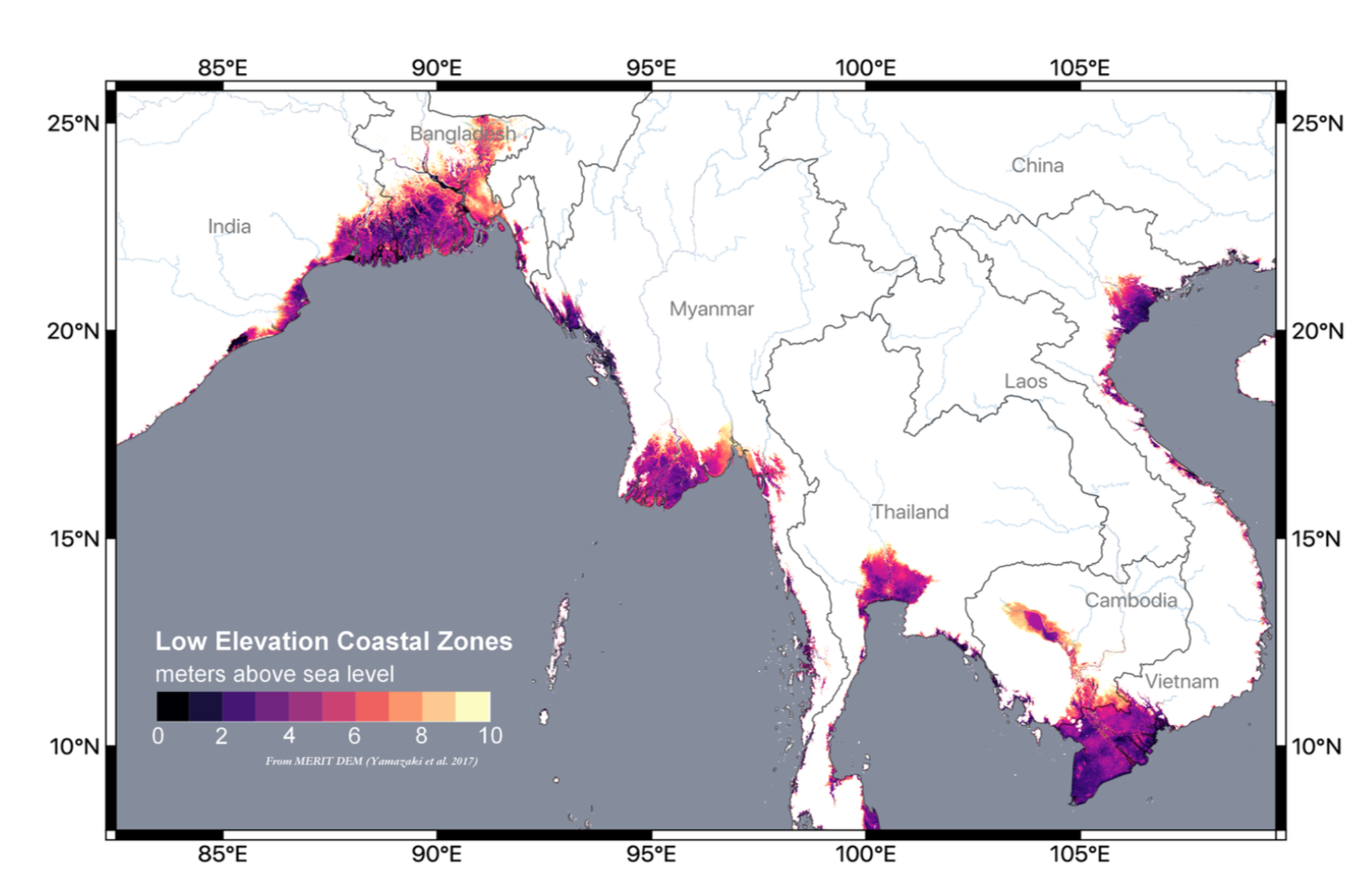More than 250 million people live in Asian deltas, a region recognized as highly vulnerable to the impacts of climate change. The situation of South and Southeast Asian deltas is especially uncertain, regarding the rates of sea level rise, subsidence, shoreline recession, sediment starvation and extreme meteorological events, combined with rapidly growing populations. There are many obstacles to understanding the dynamics of these complex systems: i) a lack of traditional in-situ measurements and difficulty of accessing the Asian deltas for managing and instrumenting them; ii) a low level of cross-disciplinary scientific production, which does not allow an integrated approach to these systems; and iii) a complex interplay of different processes over extremely broad spatial and temporal scales. Consequently, in face of ongoing climate changes, there are urgent needs for additional observations, in particular from space, and interdisciplinary researches in order to better understand the deltas’ dynamics and to provide reliable information to improve their sustainability.
This project aims to :1) provide the state of the art on the processes governing the Asian deltas dynamics, to clarify observational and modelling requirements necessary for addressing key scientific questions and elaborate a framework for integrated analysis of the delta evolution; 2) gather and assess existing and available datasets from different Earth observing systems (both in-situ and from remote sensing) as well as modelling results and projections, considering the main components in Asian delta dynamics (i.e sea level changes, land vertical movements, extreme of sea level, sediment dynamics, exposure); and 3) understand and try to reduce the wide range of component uncertainties and express the integrated impacts on the Asian deltas in terms of flooded area changes and exposed populations.
 Figure – Asian Mega-deltas : The situation is especially uncertain in South and Southeast Asian deltas which are a home to 45% of the global deltaic population, distributed among the Ganges-Brahmaputra delta (Bangladesh), the Mekong delta (Vietnam), the Red river delta (Vietnam), the Irrawaddy delta (Myanmar) and the Chao Phraya delta (Thailand).
Figure – Asian Mega-deltas : The situation is especially uncertain in South and Southeast Asian deltas which are a home to 45% of the global deltaic population, distributed among the Ganges-Brahmaputra delta (Bangladesh), the Mekong delta (Vietnam), the Red river delta (Vietnam), the Irrawaddy delta (Myanmar) and the Chao Phraya delta (Thailand).
Project workplan
Work Package 1: Project Management
The WP1 objective is to follow the team progress, design and maintain the team website, support the coordination of all activities and relationships and ensure the quality of the project outcomes and that they are performed according to the schedule. WP1 will be also responsible for managing contacts and communications with ISSI.
Work Package 2: Review of the current state of knowledge and specification of data requirements
The aim of WP2 is to draw on the existing state of the art and stakeholder expectations in order to develop methodology guidelines capable of advancing our understanding of the Asian deltas dynamics. WP2 will undertake an interdisciplinary review and appraisal of the literature in order to develop a shared understanding of the key drivers and dynamics of the Asian deltas.
Work Package 3: Compilation and analyses of Earth Observations in Asian deltas
This WP will build upon the needs identified in WP2 and will identify, compile and analyze the main Earth observations that are required to improve the current understanding of delta dynamics. It is anticipated that satellite altimetry and satellite-based land surface waters observations will be central to characterize the main drivers, complemented with in-situ measurements. Likewise, it is foreseen that these observations will be used as key inputs for model-based evaluations of flood risks and delta exposure of population and assets.
Work Package 4: Dissemination
The objective of WP4 is to ensure that the results and outcomes of the project reach targeted audience and also to provide a vision on how the team activities will be sustained and developed at the end of the project.
Header image © by ESA